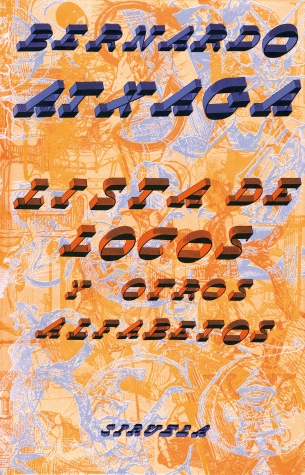“They say that the monks of eight or nine centuries ago often had to face unenthusiastic, occasionally hostile audiences, who were most reluctant to follow the steps of a theological proof or of a moral sermon, and that the Alphabeta exemplorum was born out of that difficulty and the need to overcome it. What the monks did was to share out the weight of the discourse equally, so that each of the twenty or so letters of the corresponding alphabet would bear some of that weight on its tiny shoulders and help to carry the load; for example, A might be used to demonstrate the existence of the Afterlife, B would speak of St. Basil (…) When one of those Alphabeta exemplorum first fell into my hands, I immediately saw the point of that verbal contrivance (…) I decided at once to appropriate the method (…) A year passed, and already ten or so such alphabets had left my desk to be read or published in the most disparate places. My friends were beginning to worry”
And this, explains Bernardo Atxaga, is how the idea of devising the fifteen alphabets compiled here was born. Unlike the alphabets conceived by the medieval monks though, they are not to do with theological questions, but rather with literature and the ways and forms of storytelling; in short, with language itself.
It is a great theatre of letters where each one leads us into the mysteries of reading, into a dynamic game of complicity with the reader, where from behind every letter, concepts, memories or longings emerge.
